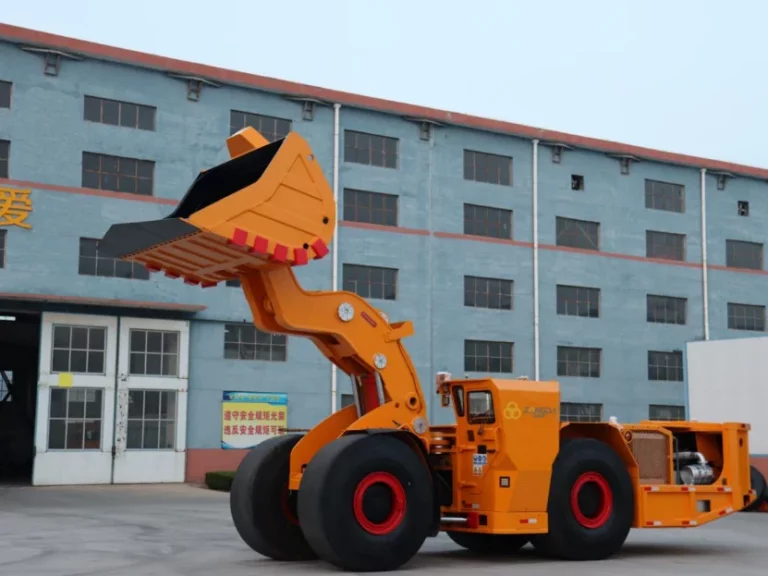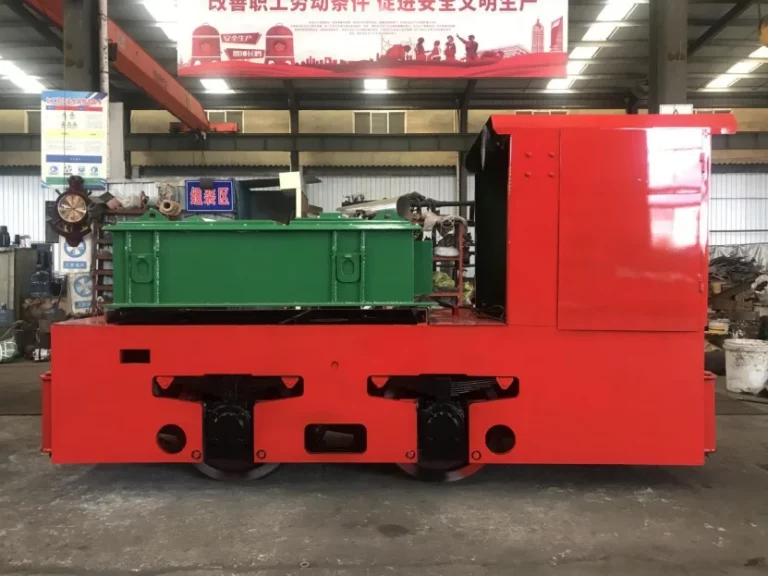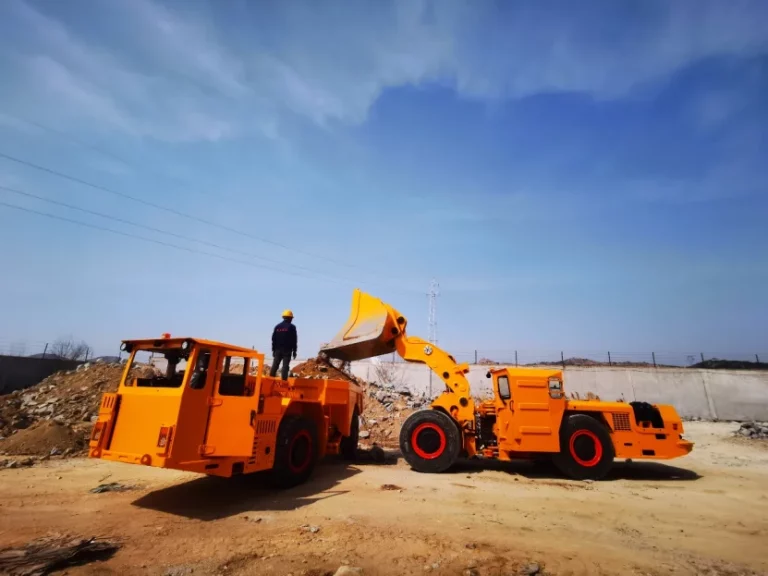Significance of Underground Mining Loaders in Mining Operations
Overview of Underground Mining Loaders
An underground mining loader is integral to the functionality of contemporary mining operations. These machines are specifically designed to meet the stringent demands and unique challenges of subterranean environments. Their primary function involves excavating and transporting materials such as ore and overburden within mine tunnels and caverns. The loaders’ compact build and exceptional maneuverability enable them to operate efficiently in confined spaces, which is essential for maintaining productivity in mining activities.
Historical Development and Evolution
The history of the underground mining loader reflects the advancements in mining technology and engineering. Initially, mining relied heavily on manual labor and rudimentary tools, which limited the scale and efficiency of operations. Over the years, mechanical loaders were introduced, significantly boosting productivity. These early machines were powered by diesel engines and lacked the advanced features seen in today’s loaders. Technological advancements have since led to the introduction of electric-powered loaders and sophisticated automation systems, which provide higher efficiency, reduced emissions, and improved safety mechanisms, marking a significant evolution in the equipment used in mining operations.
Importance of Loaders in Increasing Efficiency and Productivity
Underground mining loaders are vital for increasing efficiency and productivity within mining operations. Their importance cannot be overstated as they are responsible for moving substantial amounts of material quickly and effectively. This reduces the time required to transport ore from the mine face to processing facilities, thereby speeding up the entire mining process. Additionally, the modern designs incorporate advanced technology such as automation and remote control, which minimize downtimes and maximize operational precision. The enhancement in productivity directly translates to higher yields and profitability for mining companies.
QINGDAO ZONGDA MACHINERY CO., LTD was established 10 years ago by several shareholders with rich experience on exploration and mining field, then developed and grown up with global mining development. A key element of our ongoing commitment is close collaboration with customers in the development of innovative equipment and services to meet specific exploration and mining needs.
Technical Features and Capabilities
Design and Structure
The design and structure of an underground mining loader are tailored to meet the specific needs of underground mining. These loaders typically feature a low-profile design that allows them to operate in confined spaces. The robust construction ensures durability and the ability to withstand harsh mining conditions. The articulation in design enables better maneuverability, making it easier to navigate through narrow tunnels and sharp turns. This structural layout is crucial for maintaining stability and efficiency during operations.
Engine and Power Specifications
Underground mining loaders feature engines and power systems designed specifically for the unique demands of underground environments. A key distinction among these loaders is the type of power they use, with some being diesel-powered and others electric. Diesel loaders are recognized for their robust power output and are typically used in scenarios where there is ample ventilation to handle emissions. In contrast, electric loaders provide a cleaner option with zero emissions and quieter operation, which makes them especially suitable for minimizing environmental impact and enhancing worker health and safety in underground settings.
Diesel vs. Electric Loaders
Choosing between diesel and electric loaders depends largely on the specific requirements and constraints of the mining operation. Diesel loaders provide consistency in power and are less dependent on extensive infrastructure. However, they produce significant emissions and require thorough ventilation systems to ensure safe air quality. Electric loaders, while typically offering less power, bring the advantages of reduced noise levels and zero emissions, leading to a healthier work environment. They also contribute to lower operational costs in the long term due to savings in fuel expenses and reduced ventilation needs.
Advanced Technology Integration
Modern underground mining loaders incorporate an array of advanced technologies, which have revolutionized their functionality and efficiency. These innovations are designed to enhance operational precision, safety, and productivity.
Automation and Remote Control Features
Automation and remote control technologies in underground mining loaders have transformed mining operations. Automated systems allow loaders to operate with minimal human intervention, reducing the risks associated with underground mining. Remote-controlled loaders can be operated from a distance, enabling operators to manage the machine from a safer location. This technology not only mitigates the risks but also enhances operational accuracy and efficiency, ensuring that the loaders can perform their tasks under optimal conditions.
Safety Mechanisms and Innovations
Ensuring safety in mining operations is of utmost importance, and today’s underground mining loaders are outfitted with sophisticated safety features and innovations to safeguard workers. These loaders boast systems like collision avoidance, automatic braking, and real-time machine health monitoring. Additionally, innovations include ergonomic designs that alleviate operator fatigue and mechanisms that maintain cleaner air in mines to protect worker health. The incorporation of these safety measures is essential in reducing accidents and improving the overall safety of mining operations.
In addition to the existed products, ZONGDA MACHINERY still proactively research and develop new equipment designs, manufacturing materials and technologies to continually improve throughput, grade and recovery, equipment durability, overall safety and environmental outcomes that deliver cost-effective solutions for the customers.
Various Models and Applications
Different Types of Underground Mining Loaders
LHD (Load Haul Dump) Machines
LHD (Load Haul Dump) machines stand out as one of the most prominent types of underground mining loaders. Known for their ability to load, transport, and dump materials, these machines are essential for handling substantial quantities of ore and waste. Characterized by their robust and compact design, LHD machines are particularly effective in narrow mining spaces and challenging underground conditions. They feature powerful hydraulic systems for easier and quicker material handling, and their articulated steering allows for exceptional maneuverability, making them indispensable in modern mining operations.
Scoops vs. Other Loader Varieties
When distinguishing between scoops and other underground mining loader varieties, it is crucial to consider their design and application. Scoops are specifically designed with a front-loading bucket, making them ideal for clearing debris and carrying loose material. Unlike traditional loaders that may employ various hydraulic attachments, scoops are streamlined for efficiency in specific tasks like mucking and material transport. Their simplistic design ensures ease of operation and maintenance, which can be advantageous in environments where quick turnaround and minimal machine downtime are critical. In contrast, other loader varieties may offer multifunctional capabilities, such as drilling or cutting, which provide more versatility in complex mining scenarios.
Specific Use Cases in Different Mining Scenarios
Underground mining loaders demonstrate their versatility through diverse use cases across various mining operations. In hard rock mining, these loaders facilitate ore extraction by swiftly transporting the mined material to crushing stations or conveyor belts. In coal mining, loaders are instrumental in clearing coal seams and managing waste rock, ensuring the constant progression of mining faces. Moreover, their application extends to tunnel construction and maintenance activities, where their capacity to handle residual materials and their agility in confined spaces make them invaluable. The adaptability of these loaders ensures they are an integral component, providing seamless support across different mining environments.
Operational Impact on Mining Processes
Workflow Optimization Through Loaders
Underground mining loaders are essential for optimizing workflows by streamlining the material handling process. Their ability to quickly load and transport ore and waste reduces the cycle time for moving materials from the extraction point to processing areas. This efficiency is further enhanced with automation and remote operation technologies that minimize manual intervention. Consequently, mines can operate continuously, reducing downtime and maintaining a steady production flow. The efficiency improvements provided by these loaders directly result in enhanced productivity and better resource management, thereby boosting the overall operational efficiency of the mining operation.
Enhancing Worker Safety
Enhancing worker safety is one of the paramount contributions of modern underground mining loaders. Equipped with advanced safety features such as automatic braking systems and collision avoidance technologies, these loaders minimize the risk of accidents. Their integration with remote control and automation technologies also means that operators can manage machinery from secure locations, significantly reducing the exposure to dangerous underground conditions. Moreover, ergonomic designs and innovations such as air quality monitoring systems ensure that the working environment is as safe and healthy as possible, further protecting the wellbeing of the mining workforce.
Contribution to Sustainable Mining Practices
Underground mining loaders also contribute significantly to sustainable mining practices. The use of electric-powered loaders marks an important step in reducing the carbon footprint and lowering emissions in mining operations. Electric loaders also contribute to quieter and cleaner working environments, which has a direct positive impact on the health and safety of workers. Furthermore, the adoption of automation and efficient fuel use in diesel-powered loaders minimizes resource waste and optimizes energy consumption. By integrating these sustainable practices, mining companies not only comply with environmental regulations but also promote eco-friendly operations that benefit the broader community and environment.
Maintenance and Operational Challenges
Regular Maintenance Requirements
Routine maintenance of an underground mining loader is crucial for its longevity and optimal performance. Regular inspections and preventive maintenance schedules are necessary to identify wear and tear, mechanical failures, and potential issues before they lead to costly downtimes. This includes checking hydraulic systems, engine performance, tire condition, and the structural integrity of the loader. Lubrication of moving parts and timely replacements of filters and fluids are fundamental to keep the loaders operational. Ensuring a comprehensive maintenance program directly impacts the reliability and efficiency of the loader, thus maintaining uninterrupted mining operations.
Overcoming Common Operational Issues
Operational challenges are inherent while using an underground mining loader. One of the frequent issues includes managing the high level of dust and debris in underground environments, which can clog filters and reduce engine efficiency. Loaders are also prone to overheating due to their compact design and the continuous, rigorous activities they perform. To combat these challenges, it’s essential to incorporate advanced filtration systems and cooling mechanisms. Another common problem is the limited visibility in underground tunnels, which can impair loader operation. Implementing advanced lighting solutions and sensor technologies can significantly enhance visibility and operational safety. Underground mining loaders face numerous operational challenges. Among these, managing the significant amount of dust and debris in subterranean settings is a recurrent issue, as it can clog filters and diminish engine efficiency. Additionally, loaders often overheat due to their compact design coupled with the continuous, strenuous tasks they undertake. Addressing these issues necessitates the integration of sophisticated filtration systems and cooling technologies. Limited visibility in underground tunnels presents another typical problem that can hinder loader operations. The application of cutting-edge lighting solutions and sensor technologies can greatly improve visibility and operational safety.
Innovations to Minimize Downtime
Innovations in technologies and engineering have significantly contributed to minimizing the downtime of an underground mining loader. The introduction of predictive maintenance software that uses data analytics to forecast potential mechanical issues before they occur has been a game-changer. Furthermore, quick-change modules for critical components ensure that any necessary repairs or replacements can be performed swiftly, reducing idle time. The adoption of telematics and remote diagnostic systems allows real-time monitoring and troubleshooting of loaders, ensuring prompt response to any issues. These advancements collectively enhance the reliability and availability of mining loaders, fostering continuous operations with minimal disruptions.
With 30 professional and experienced mining experts and engineers, we are focused on research and development, production, sale and service of exploration and mining machinery, a solution supplier and a mining project contractor in China with strong comprehensive strength and rich experience in mining industry.
Future Trends in Underground Mining Loaders
Emerging Technologies Shaping the Future
The future of the underground mining loader is being shaped by emerging technologies that aim to enhance performance and safety. Autonomous loaders integrated with artificial intelligence (AI) and machine learning (ML) capabilities are being developed to perform tasks with high precision and minimal human intervention. These loaders can navigate complex underground terrains, optimize routes, and improve operational efficiency. Additionally, advanced sensor technologies and Internet of Things (IoT) connectivity are being incorporated to allow seamless data sharing and real-time monitoring. Furthermore, the integration of augmented reality (AR) systems for maintenance and training purposes also stands out as a pivotal emerging trend.
Environmental Considerations and Sustainable Advancements
Environmental sustainability is becoming increasingly important in the use of an underground mining loader. The shift towards electric-powered loaders is a significant step in reducing the environmental impact of mining operations. These electric loaders not only minimize emissions but also reduce the noise pollution, making the underground environment safer and more conducive for workers. Efforts are being made to recycle materials and components used in these loaders to further enhance their sustainability. Innovations like energy-efficient battery systems and regenerative braking technologies contribute to reducing the overall carbon footprint. Moreover, adherence to strict environmental regulations and the adoption of eco-friendly practices are becoming integral to modern mining operations, ensuring that the industry progresses towards a more sustainable future.





